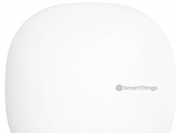Both medical alert systems and personal alert systems are designed to give seniors who live independently a fast and reliable way to call for help in the event of an emergency. But is there really a difference between the two kinds of systems? And which is right for your situation? If you are shopping for an emergency alert system for yourself or an elderly family member, here’s what you need to know about the difference between “medical alert†and “personal alert†systems.
Similar Technology
Both medical alert and personal alert systems are designed to give self-sufficient seniors easy access to emergency assistance if an unexpected event like a fall prevents them from getting to the phone. The technology of both systems is similar and includes two basic components:
- Transmitter: Battery-powered transmitters are typically waterproof and designed to be worn on a lanyard around the neck, on the wrist or wheelchair, or clipped to a belt. Most transmitters have an emergency “help†button and also allow two-way communication so the wearer can describe the emergency.
- Base station (or console): The transmitter communicates wirelessly to the base station, which is typically connected to a standard (landline) phone line.* In the event of an emergency, the base station dials up a call center and/or pre-programmed phone numbers of family or friends.
*Some newer emergency alert systems communicate via VoIP or cellular as an alternative to a landline phone connection.
Primary Differences: Who Receives the Call & Cost
The biggest difference between a medical alert system and a personal alert system is who receives the call in the event of an emergency. Costs also vary greatly.
Medical Alert System
Medical alert systems contact a professional monitoring center manned by trained service personnel who in turn call the local police, emergency services and/or family. The equipment is usually leased. The fee for equipment rental and the call center monitoring service ranges from $25 to $50 per month (see “Medical Alert Systems Comparison Chartâ€Â from consumerreports.org). Some providers require long-term contracts and also charge activation and cancellation fees.
Personal Alert System
 Instead of a call center, a personal alert system calls your personal list of family, neighbors or friends who are able to respond to an emergency call. Once activated, the base station repeatedly calls the emergency phone numbers until a live person responds. If no one answers, 911 is contacted. The number of phone numbers and calling cycles varies by model. For instance, the FreedomAlert dials up to four phone numbers. Equipment is purchased, not leased.  The price to buy a personal alert system range from about $150 to $300.  There are no monthly fees or contracts.
Instead of a call center, a personal alert system calls your personal list of family, neighbors or friends who are able to respond to an emergency call. Once activated, the base station repeatedly calls the emergency phone numbers until a live person responds. If no one answers, 911 is contacted. The number of phone numbers and calling cycles varies by model. For instance, the FreedomAlert dials up to four phone numbers. Equipment is purchased, not leased. Â The price to buy a personal alert system range from about $150 to $300. Â There are no monthly fees or contracts.
Criteria for Choosing: Health, Proximity and Cost
Anyone of any age can benefit by having an emergency alert system in the home, although most users are seniors who want to live a more independent, active lifestyle and stay in their own home. Frequently, the children of aging parents purchase a medical alert or personal alert system to provide mom or dad with a way to call for help quickly if needed.
When deciding between a medical alert system and a personal alert system, consider:
(1) the user’s overall health; (2) the proximity of the support network (family or friends); and (3) cost.
Health
Although more expensive, a medical emergency alert system is recommended for people with a chronic illness and/or those who are at high risk of falling because the call will always be answered promptly by a call center representative. Illnesses include heart disease, seizures and diabetes and fall risks include people with poor eyesight, memory loss, vertigo or osteoporosis, as well as patients who take multiple medications which may have side effects that affect balance or memory.
Proximity of Support Network
 A personal alert system is an excellent choice for seniors who are in good health and have a reliable network of family, neighbors or close friends who live nearby and can respond to an emergency call. For a very modest one-time investment, personal alert systems provide users with instant access to their personal support network and/or a 911 operator.
A personal alert system is an excellent choice for seniors who are in good health and have a reliable network of family, neighbors or close friends who live nearby and can respond to an emergency call. For a very modest one-time investment, personal alert systems provide users with instant access to their personal support network and/or a 911 operator.
For nonemergency situations where the user doesn’t need an ambulance but does need someone to come to their aid, a personal alert system like FreedomAlert actually does the job better than a medical alert system that would route the request through an outside call center.
If having the ability to dial 911 is your only requirement, the tiny Guardian Alert 911 is a two-way communication device that costs only $150 and has no monthly fees, long-term contracts or hidden costs. Â By pressing a single button, the Guardian Alert 911 automatically dials local emergency 911 dispatch and allows the user to communicate directly to the emergency operator through the pendant.
Cost
The average cost to lease a medical alert system for one year is $360, plus activation charges (depending upon the service provide. Â For less than $360, you can buy a personal alert system and never pay monthly leasing or call center service fees.
Summary
Medical alert systems and personal alert systems are similar in design and provide users with a way to get emergency help quickly. If the user does not have serious health issues or risks and has a reliable “lifeline†of family or friends who live in the area and can jump in to help when called upon, a personal alert system is an excellent alternative to signing a long-term contract with an expensive medical alert system leasing company.





